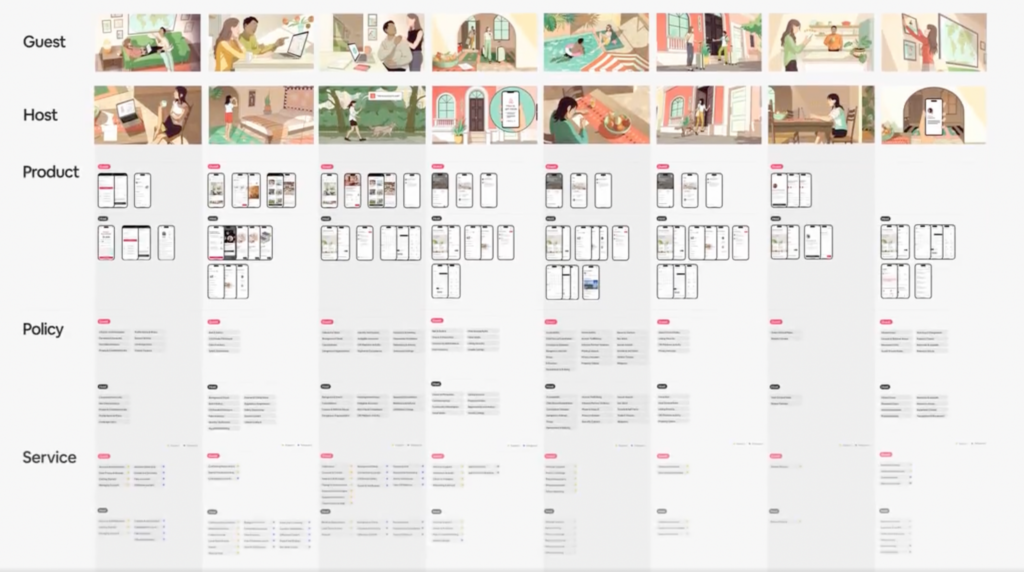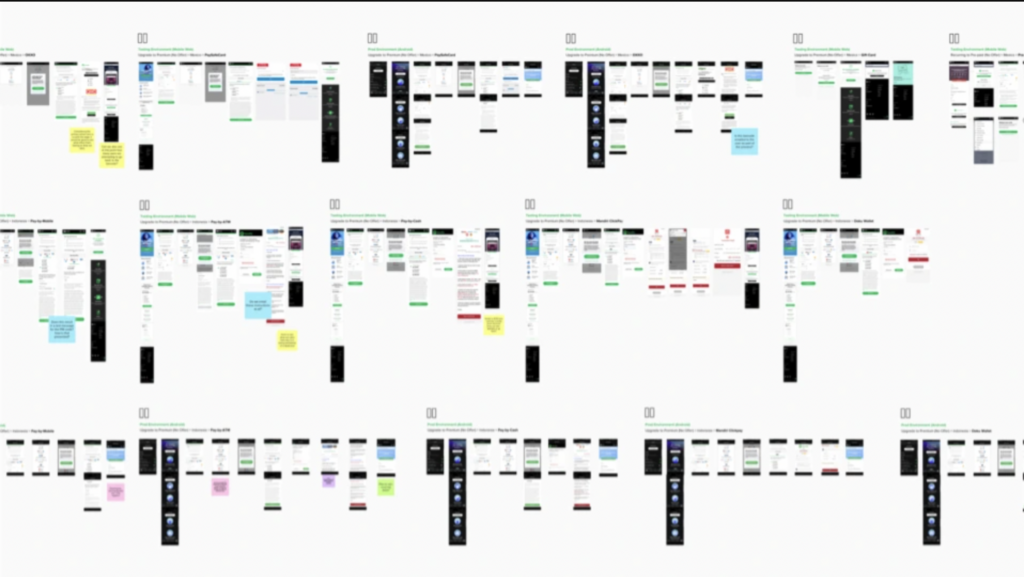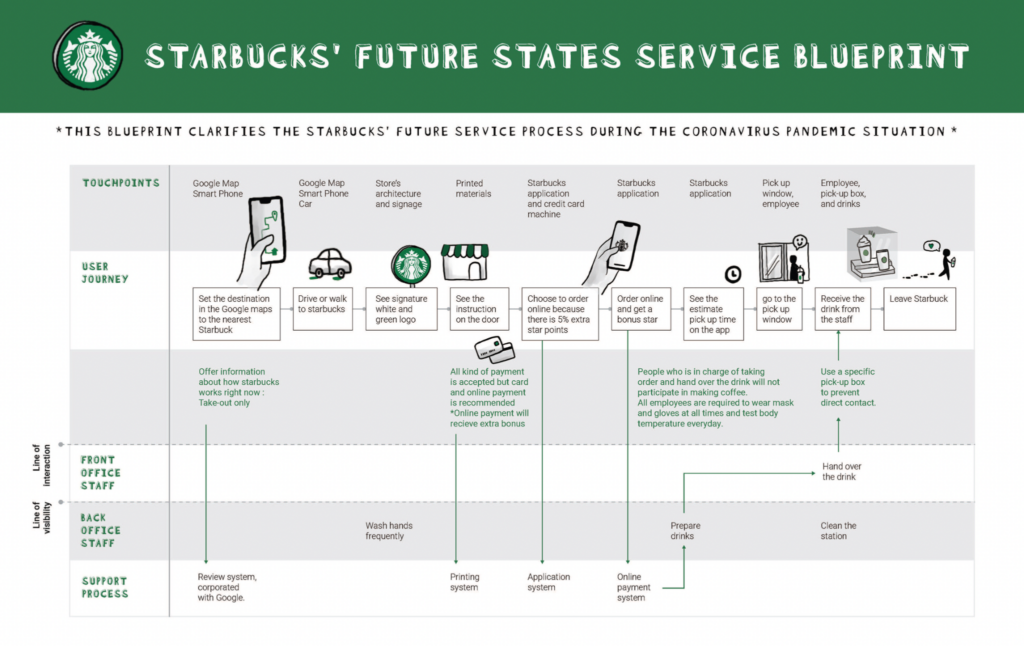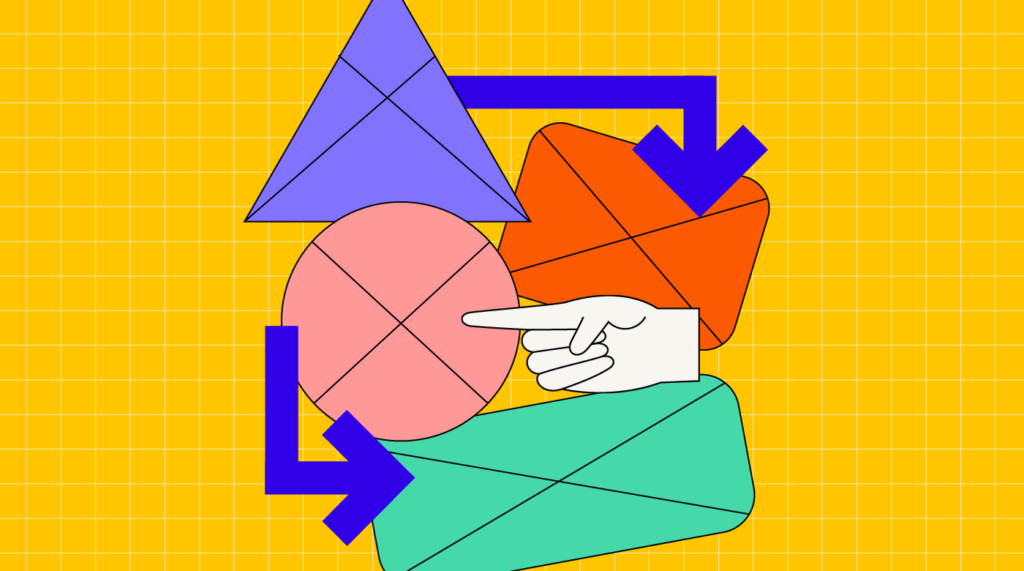Do you know what a service blueprint is? It's a design thinking framework that illustrates how different service components come together across the customer journey and internal processes. A service design blueprint encompasses the touchpoints between people, processes, and both digital and physical elements across customer actions. Service blueprints are particularly useful in complex scenarios involving multiple service offerings. If you're considering creating a service blueprint, exploring existing examples can provide inspiration.
As a research and insights strategist, I often rely on service blueprints to help clients understand their own service systems. Service blueprints are essential customer experience design tools and many brands have recognized their value.
Service blueprints were once only really utilized in large systems like healthcare, tourism, and banking. However, there has been a significant shift in their usage and application over the past few years. Today, service blueprints are not limited to only massive systems. They offer valuable insights even for smaller systems, because even those have many layers and complexities.
Several notable brands have incorporated service blueprints into their practices, with some even sharing their work with the world. By doing so, these brands demonstrate their commitment to enhancing the customer experience, which in turn has positive implications for their business. Let's explore three notable service blueprint examples.
Service Blueprint Example 1: Airbnb
With more than 150 million worldwide users that have booked over 1 billion stays, Airbnb is a prime example of a company that has succeeded in delivering a solid service offering. It blends both the physical and digital experience, also known as a phygital approach.
You can imagine that Airbnb’s service system is quite complex, yet it has succeeded in delivering a strong customer experience. The service blueprint has been used to help achieve continuous improvements in the experiences of guests, hosts, and internal stakeholders.

The Design Challenge
During the Covid-19 pandemic, Airbnb faced a significant setback, losing 80% of its business within weeks and subsequently laying off 1,900 employees. This organizational change presented an opportunity to adopt a more holistic approach to service design, which included the creation of a service blueprint.
The Approach
This massive organizational change led to a shift in the product’s focus. As the Co-Founder and CEO, Brian Chesky put it, “We put the entire company on a single roadmap. And we said, we’re going to just start focusing on fixing user problems.” Airbnb’s subsequent teams sifted through loads of customer feedback, and mapped it out. By doing this, they were able to not only identify trends in experience, but also zero in on how to prioritize fixing user problems.
Their service blueprint encompassing five key swimlanes: Guest, Host, Product, Policy, and Service.
Why It Works
Creating a service blueprint starting with the customer resulted in some big improvements throughout the entire process. For example, they redesigned the way in which cleaning fees appeared in the pricing, so that they were included in the nightly rate in search results instead of only appearing when the customer was ready to pay.
Through the help of the service blueprint, Airbnb was also able to make changes that benefited the hosts. This was possible because service blueprints capture the experience of other stakeholders and processes throughout the customer journey, in addition to the end customer themselves.
By putting the entire company on one road map, every executive now needed to understand this journey. It reconnected teams and departments, allowing for holistic support processes.
Service Blueprint Example 2: Spotify
The next service blueprint example that we will discuss is the digital experience product, Spotify. This listening platform has around 515 million monthly active listeners, across the world. Its growth has been incredible, generating around $12.6 billion USD in revenue in 2022, and a 21% increase year-on-year.
Since at least 2019, Spotify has been using service design as a tool to constantly increase the quality of its customer experience. They have also used service design to ameliorate the experience of their internal teams with the help of service blueprints.

The Design Challenge
The service blueprint challenge that we’ll talk about today touches on a specific kind of Spotify customer. Spotify has such a massive reach, that it has many kinds of people that its product must serve. You can imagine how this kind of scaling and diverse customer base would involve stretching into many directions when it comes to understanding who to build their products and services for.
One example of using a service blueprint to help improve a feature offering is based on one of Spotify’s personas, Shelley, who lives with her partner. She could potentially benefit from Spotify’s new offering, the Premium Duo plan. This one monthly bill for two people living together was designed with perks that would meet the specific needs of these two customers living together. Some examples of these needs included having individual accounts for listening to, but also a shared playlist for when they are listening together at home.
The Approach
The way in which Spotify tackled the research was by putting people, in this case, Shelley, at the center across all their internal teams. For example, product, engineering, user research, and operations all needed to understand what customer actions are taken, what their pain points were, and what the general user experience was across Spotify’s service processes.
They looked at their problem space through the lens of two key themes: human considerations, and experience components. Human considerations include ergonomics, ethical implications, cognitive capabilities, and behavioral nudging. Experience components consider how the experience makes the customer feel.
They also used storyboarding and bodystorming as a way in which to bring the service blueprint to life. These methods helped bring life to the many touchpoints that Shelley would encounter with the product.
Why It Works
Spotify's approach involves engaging multiple stakeholders early in the research and design process. This not only ensured alignment with service design methodology but also increased the likelihood of acceptance and utilization of the results.
By cultivating familiarity and understanding of the journey, Spotify has effectively integrated service blueprints into numerous other projects, such as a Cash Payments initiative in Indonesia that involved ethnographic research and interviewing people as they went about their day-to-day payments journeys.
Service Blueprint Example 3: Starbucks
The final service blueprint example we’ll look at is many people’s beloved coffee shop, Starbucks. This mega-brand currently has consolidated net revenues of $8.7 Billion USD. Over the years, Starbucks has expanded globally but also closed down stores when needed. Though primarily a physical experience, they have also integrated digital touchpoints where customers can order ahead online.
For this next example, we’ll focus primarily on a service blueprint around their physical space, with some small digital aspects added in.

The Design Challenge
This challenge is one that came from design students, not directly from the company. What is nice about the students’ work is that it shows how future state ideas can be visualized on a service blueprint. Future state blueprints can be used as a guiding light for where you want to get to in terms of journeys and processes.
The Approach
This future state service blueprint was context-specific, looking at what the students recommended during the Covid-19 pandemic, with particular attention to health and safety. The approach to this topic also involved creating multiple customer journey maps and a systems map.
Why It Works
By presenting all of these artifacts in one place, the reader can look at them through an even more holistic lens than what a service blueprint on its own already brings. The students captured the various routes in which a customer could obtain their purchase, which involved three separate journey maps: Drive-Thru, Online Pick Up, and Walk In.
Furthermore, as the creators were students, one could assume that they worked with limited resources. Yet they did a wonderful job at creating a future state service blueprint, such as including small illustrations to add context to the visual.
Let These Service Blueprint Examples Inspire You!
Well, there you have it. As you read through each example, I hope you were able to understand a bit more about the service blueprinting process and find some inspiration for what strategy might work for you.
Remember that there is no one and only way to make a service blueprint come to life, though starting with a service blueprint template can help you get started. Also, having supportive materials such as customer journey maps, personas, and storyboards can help keep the person at the center and keep the system holistic in nature.
If you are finding yourself returning to The CX Lead often, you may want to subscribe to our blog to stay up to date on the most current tools and insights.


